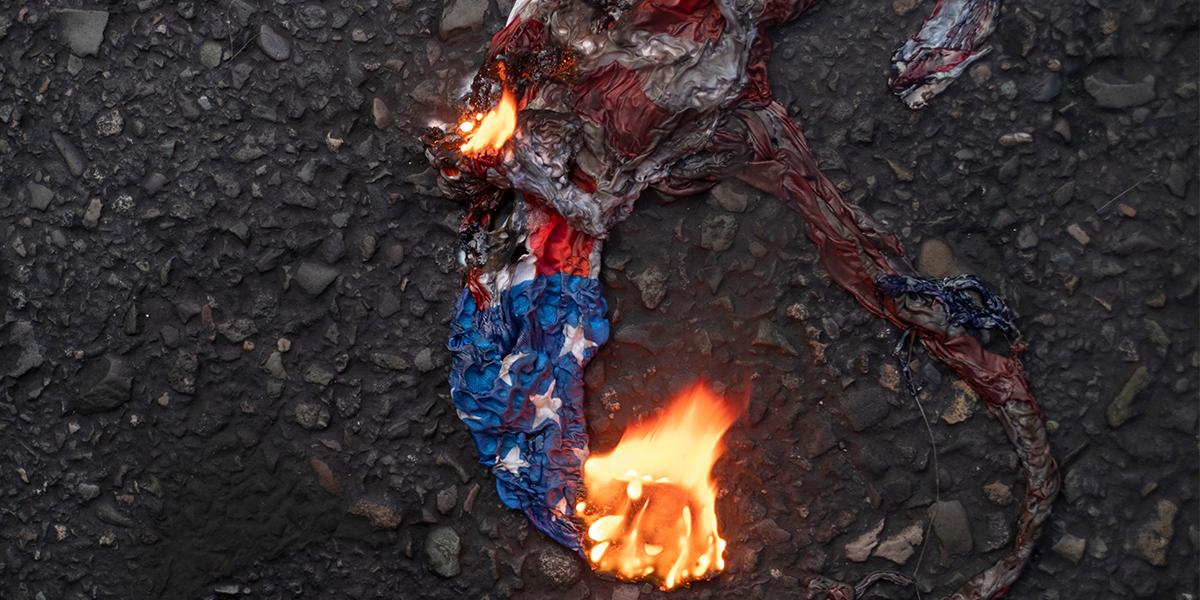
The situation in the Middle East is growing more and more dangerous for the Americans stationed there. Two Navy SEALs are dead after being lost at sea off the coast of Somalia while searching a boat that was allegedly carrying weapons bound for Yemen. And many US troops have suffered concussions and other brain injuries in rocket attacks in Iraq and Syria. President Joe Biden and his advisors are reportedly convinced that it is only a matter of time before US troops are killed directly.
The Biden administration also suggests American deaths will give them no choice but to carry out direct attacks against Iran—the exact approach Biden himself has admitted isn’t working against Yemen.
But the danger is greater than Biden is letting on.
In 1996, the Israeli government conducted a military operation across its northern border in Lebanon. The campaign, called Operation Grapes of Wrath, aimed to defeat the militant group Hezbollah. The Israeli strategy will sound familiar to anyone who has been following the war in Gaza.
The Israeli Defense Force (IDF) dropped leaflets warning the people of numerous south Lebanese villages to evacuate by the following afternoon. Shortly after the deadline, Israel began shelling and bombing homes, ambulances, and all other sorts of civilian infrastructure within the villages.
The shelling was met with international criticism, to which the Israeli spokesperson responded, “We gave the residents advance warning to clear out so as not to get hurt. All those who remain there, do so at their own risk because we assume they’re connected with Hezbollah.”
But that excuse was later revealed to be a lie. The IDF was deliberately striking civilian targets in an attempt to “cause a flow of civilians north, toward Beirut [the capital], thus applying pressure on Syria and Lebanon to restrain Hezbollah,” in the words of the Israeli Air Force.
That strategy was upended on April 18, 1996, when Israeli forces shelled a United Nations facility outside of the village of Qana that was full of local civilians. The optics of a direct strike on women and children sheltering from the violence was too much. Israel entered into talks and, a week later, agreed to a ceasefire.
In the end, 154 Lebanese civilians were dead and 351 were wounded.
About two thousand miles away in Germany, a graduate student from Egypt watched the carnage closely. Days after the Qana strikes, twenty-seven-year-old Muhammad Atta signed “his last will and testament” to symbolize, in the words of Scott Horton, “his willingness to die in the fight against those he blamed for the war.” And who did he blame? The United States.
Atta and his peers, later known as the Hamburg cell, were convinced that Grapes of Wrath would never have happened without all the money and equipment supplied by the US government.
The following year, Atta and his best friend traveled to Afghanistan to volunteer their services to Osama bin Laden. As Horton reflects, “Their potential must have been obvious to al Qaeda; upper-middle-class graduate students studying engineering in Germany would have easy access to the United States.”
Four years later, Muhammad Atta led the team of hijackers that killed almost three thousand Americans on September 11, 2001. He personally flew the first plane into the North Tower of the World Trade Center.
Now, over twenty years later, militants in Yemen, Iraq, and Syria have already demonstrated that they, too, blame the United States for the manner in which Israel is waging its war in Gaza. And because the level of civilian death is so much higher in this war—with almost ten thousand children killed so far—that ought to worry us.
When libertarians say what’s happening in the Middle East is not our war or that our involvement goes against America’s interest, it’s not that we’re complaining that there isn’t much to gain. It’s because we recognize how much the American people have to lose.



